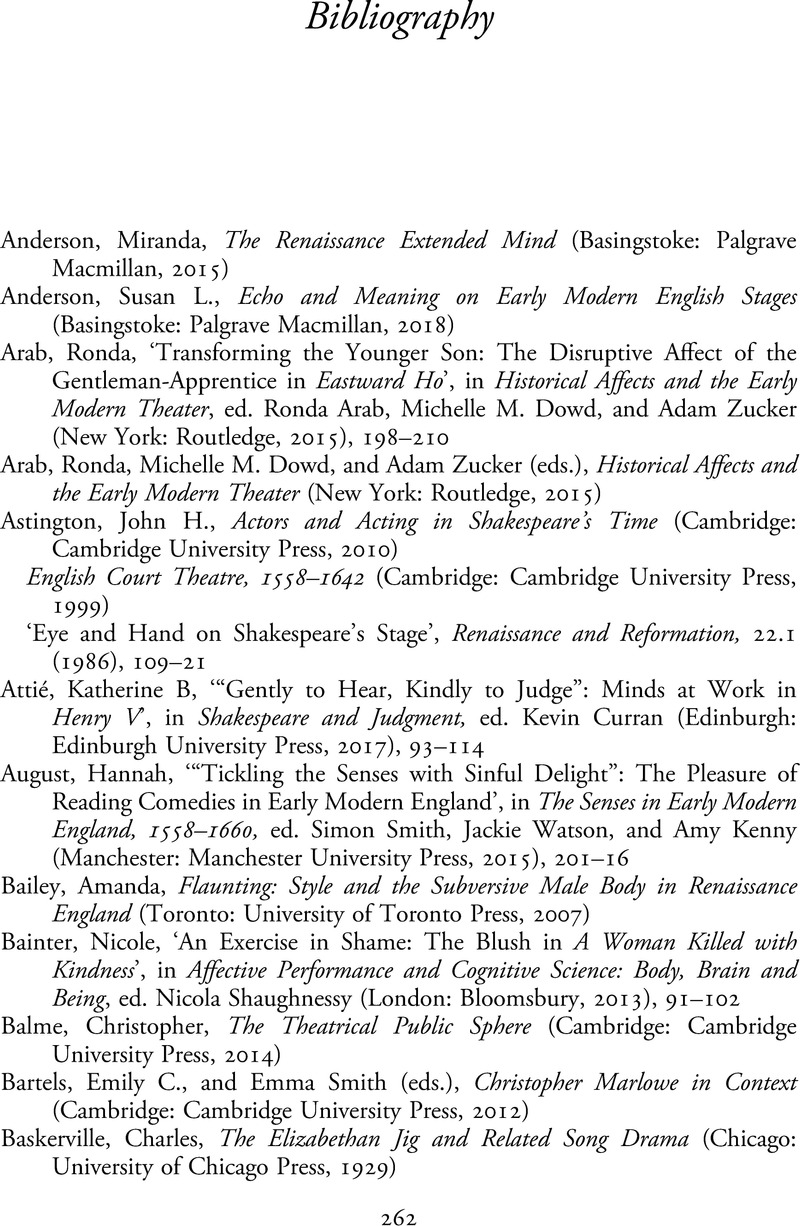Bibliography
Published online by Cambridge University Press: 10 March 2022
Summary

- Type
- Chapter
- Information
- Playing and Playgoing in Early Modern EnglandActor, Audience and Performance, pp. 262 - 276Publisher: Cambridge University PressPrint publication year: 2022

